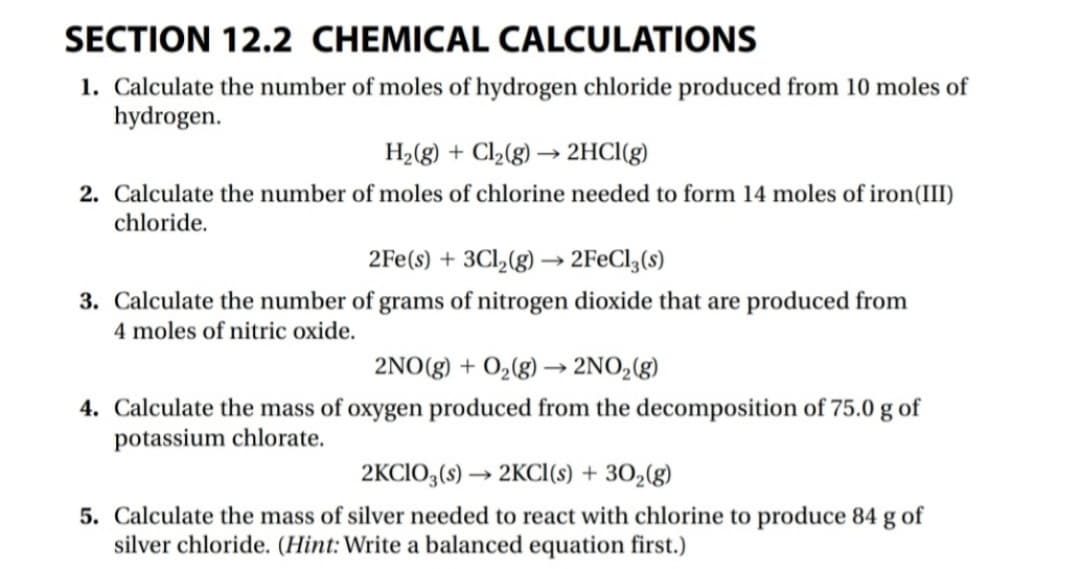
Trending now
This is a popular solution!
Step by step
Solved in 2 steps

. Calculate the number of moles of hydrogen chloride produced from 10 moles of
hydrogen.
H2(g) 1 Cl2(g) y 2HCl(g)
2. Calculate the number of moles of chlorine needed to form 14 moles of
iron(III)chloride.
2Fe(s) 1 3Cl2(g) y 2FeCl3(s)
3. Calculate the number of grams of nitrogen dioxide that are produced from
4 moles of nitric oxide.
2NO(g) 1 O2(g) y 2NO2(g)
4. Calculate the mass of oxygen produced from the decomposition of 75.0 g of
potassium chlorate.
2KClO3(s) y 2KCl(s) 1 3O2(g)
5. Calculate the mass of silver needed to react with chlorine to produce 84 g of
silver chloride. Hint: Write a balanced equation first.
6. How many liters of carbon monoxide at STP are needed to react with 4.80 g of
oxygen gas to produce carbon dioxide?
2CO(g) 1 O2(g) y 2CO2(g)
7. Calculate the number of liters of oxygen gas needed to produce 15.0 liters of
dinitrogen trioxide. Assume all gases are at the same conditions of temperature
and pressure.
2N2(g) 1 3O2(g) y 2N2O3(g)






